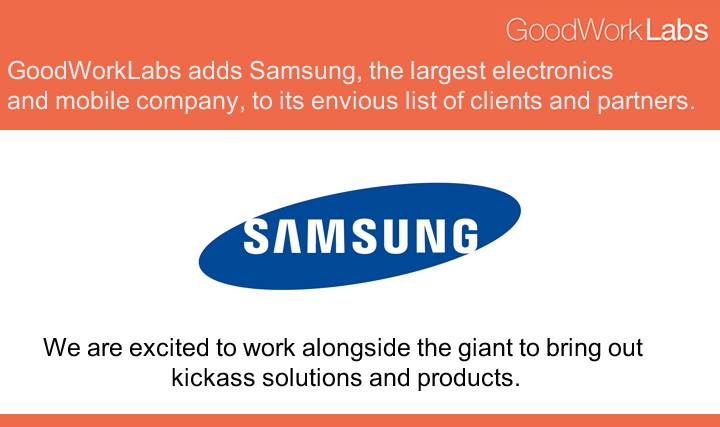10 Things Everyone Must Know About the Java Microservices
For software architects, microservices are the wave of the future. Sounds convincing? To learn more about the advantages of microservices architecture, check out the top 10 reasons.
Also, make sure that you know about all the barriers in terms of technical complexity, stack, and more moving to the microservices architecture.
Java is a language that has been around for some time, and people wonder if it is useful in a microservices setting. This article explains the advantages of microservices architecture and why Java still has a lot of significance in contemporary apps such as microservices.

The Need for writing the microservice applications in Java
For excellent reasons, Java is a common linguistic option. The language is strong, with years of experience working with critical apps for missions and evolving with the emergence of fresh planning models. The near-omnipresent use of Java in company apps has developed an extensive pool of Java-based software developers. Even when fresh apps are created, it is useful to use current abilities.
The intensive learning curves are provided by microservices with the addition of a language to the mix which may increase the danger. It presents yet more unidentified information about the creation, deployment, and administration of a manufacturing microservice implementation.
To revolutionize your organization, it’s always positive to keep an eye on the upcoming technologies, frameworks, languages. If in your monolithic framework you are still cemented in your cube messing around with code, then you probably live in the past, where you have a small application and some employees to handle it.
JavaScript is usually used for the application front end (particularly for web-based applications). Java for battle-tested data management is also common in the background. While there is still a lot of space for spectral variations, Java is great for writing micro-services.
Nowadays, things have been changing. You have to go a step forward and walk with the revolutionary technologies where microservices are among the leaders. Are you looking for the best reasons to invest time in learning microservices with a view to becoming an architect and developing applications using them?
This article will help you in learning various advantages of microservices architecture and various reasons so as to why learn microservices.
-
Various Tools can be used flexibly as and when required
The architecture of microservices encourages the use of the most suitable technology for the service’s specific needs. Each service is free to use its own language, framework or auxiliary services. The services still communicate easily with the other services in the application even with the use of such diverse frameworks.
-
High-Quality code is provided
The entire framework is modularized into discrete components following the microservices architecture. This helps the application development team concentrate on one specific job at a time. In turn, this simplifies the overall process of coding and testing.
-
Various Applications can be easily Built and Maintained
The team of developers divides into the following activities as and when the products built by developers become stable and are available for customers.
- Implementing various new features
- Bug fixing
- Modifications in the existing features
If the product is based on a monolithic framework, each change to the codebase must pass through all stages of construction, maintenance, and deployment. Microservices are a savior in these situations!
-
The Technology Stack
The technology stack is difficult enough to decide for a monolithic application, but for every microservice, this decision must now be taken. What seems theoretically attractive can become difficult in practice if your services are too heterogeneous. Standardization is becoming a problem and cowboy behavior is possible. It’s also more difficult when every team has a totally different stack for people to move between teams.
It is always recommended to have a balanced approach where the application has a preferred technology stack. If any team wishes to override this default stack, it should justify the fact that it is better suited for microservice with advantages and disadvantages. Your stack of technologies should include the language of programming, test, and logging, cloud providers, facilities, storage, monitoring, etc.
-
Improvements in the Scalability
The main aspect of microservices is scalability. Since each service is a separate part, a single function or service can be expanded without the application being scale-up in full. Business services for increased availability and performance on multiple servers can be used without affecting the efficiency of other services.
-
Faster Market Time
Due to the fact queuing up of microservices, you don’t need to rewrite all the codebase for a feature to be included or modified. Only a specific service will be changed. You can quickly market your application and services by the development of applications in smaller increments that can be independently tested and deployed.
-
The Complex Operations
The complexity of operations is much increased by microservices as operations must be revised from a fundamental point of view. The following aspects must be considered:
Infrastructure
The definition of microservice infrastructure requirements and subsequently the provision and maintenance of infra for each microservice creates a level of complexity which most monolithic Ops engineers are not used to. Furthermore, as these services are expanded and reduced, the infrastructure must be automatically provided and reduced, thus requiring a very advanced level of automation.
Load balancing and scaling
It is likely you will need a much more complex, scaling strategy than with monolithic, ever-scale(x-axis) applications. If you need to scale all the services or just a subset when there’s a high demand, you’ll need to figure out with Microservices. The y-axis scaling is essential for the operations team, as the microservices approach and z-Axis scaling are consistent to obtain x and y.
Service detection
Dynamically, due to scaling and upgrades, the set of service instances of a world with microservices. Services also have dynamic network locations, so you need a way to discover new services. For this, it is always recommended to go for a registry service such as Consul because it works very well.
Monitoring
This must be configured and maintained on every microservice to make the operations team engineers more complex. In addition, the surveillance solution must manage situations for increasing and downloading a subset of facilities.
-
Delivery is Continuous
In contrast to monolithic apps where devoted teams operate for each individual function like database manipulation, server logic retention, microservices utilizes the continuous delivery model to manage the entire application lifecycle.
The developers, the test teams and the operations team work together on the construction, testing and debugging of a single service.
-
Risk Reducer
Every service in the microservices framework is a distinct entity, which enables localization, increased confidence in quality, and end-to-end regression scenarios. Even if one service or application element is down, the entire application will not decrease. Rather, the designers only need to rebuild that specific service or element. This decreases the danger of your company application being completely dropped!!
-
Delivery is Continuous
In contrast to monolithic applications in which dedicated teams are working on discreet functions such as UI, database, server logic and technology, microservices employ cross-functional teams to operate on a continuous delivery model for the entire life cycle of an application. Testing and deployment become simple and instantaneous when developers, activities and test teams operate on one service concurrently. Code is constantly being created, tested and implemented through this strategy of incremental development, and instead of reinventing the wheel; you can use code from current libraries.
Conclusion
As you can see, Java is greatly suited for microservices because of many reasons along with the advantages of microservices architecture. For more information and some good practice tips, check out our official website of Goodwork Labs and learn more about us.
So, what you are waiting for, contact us today.





